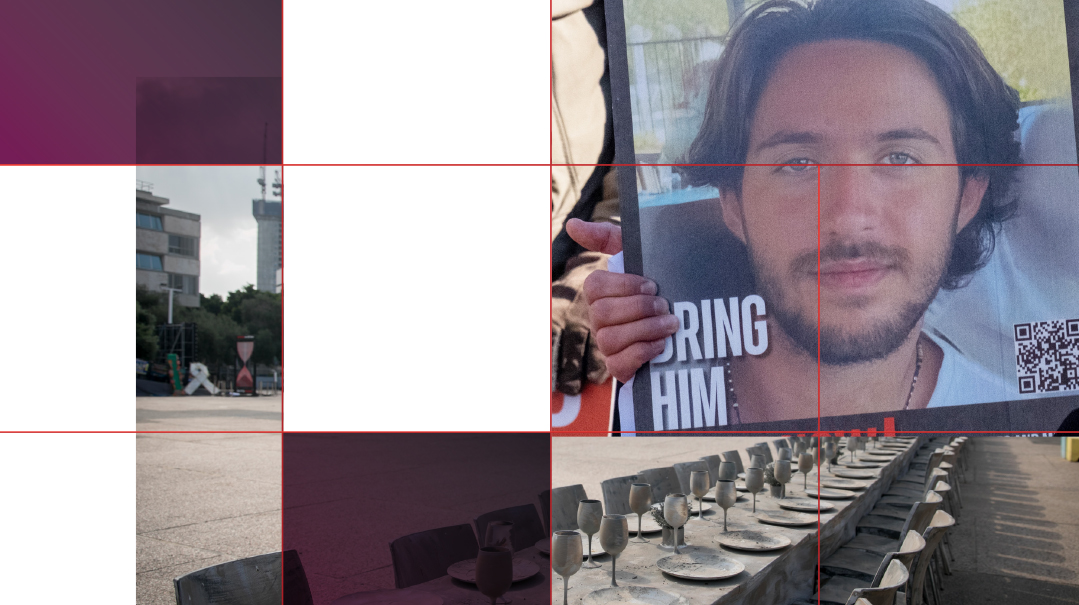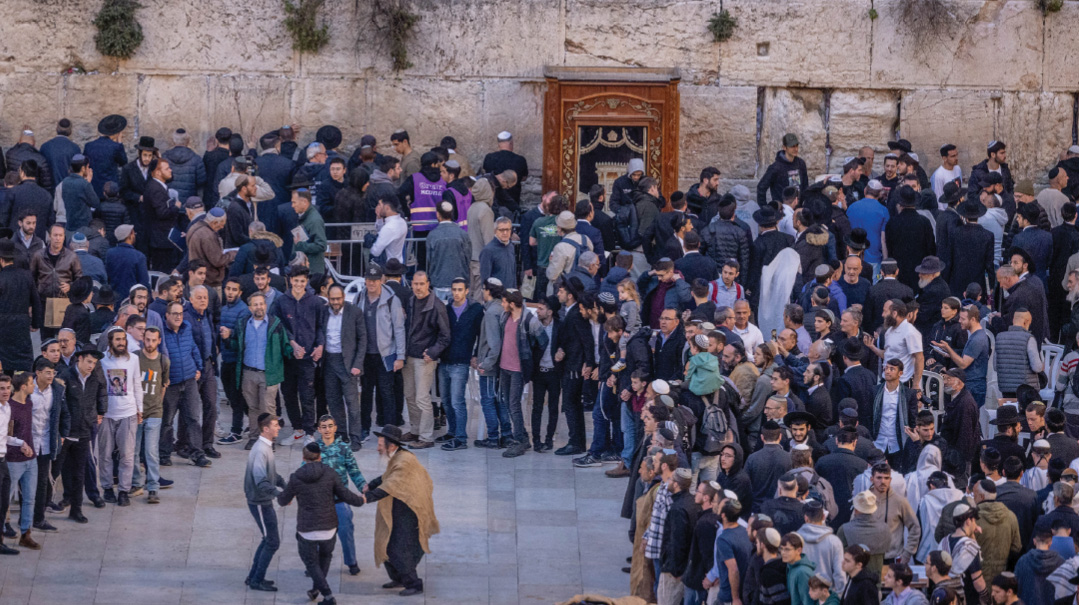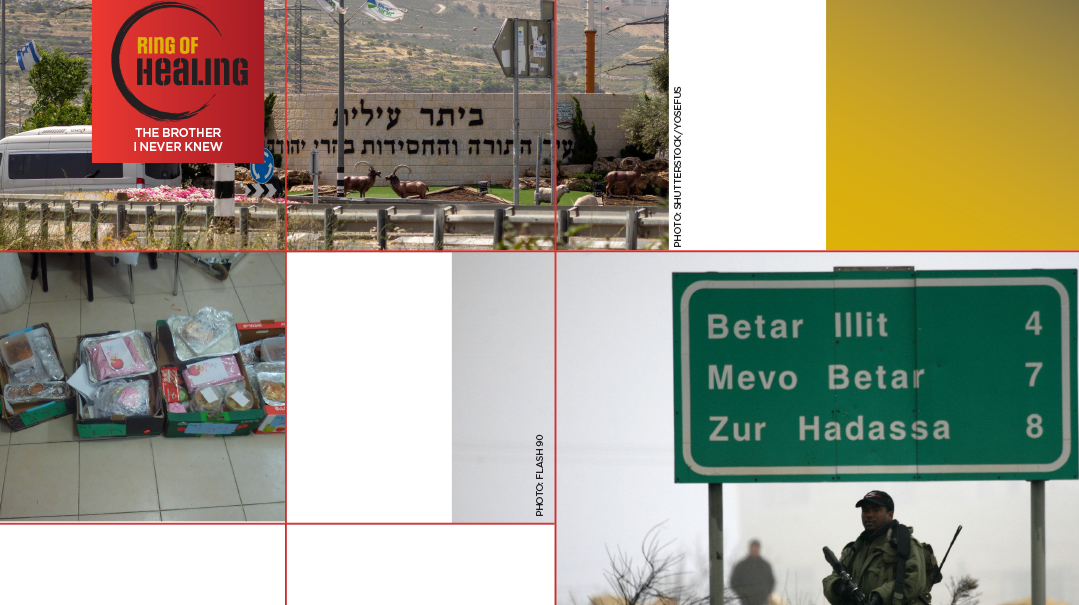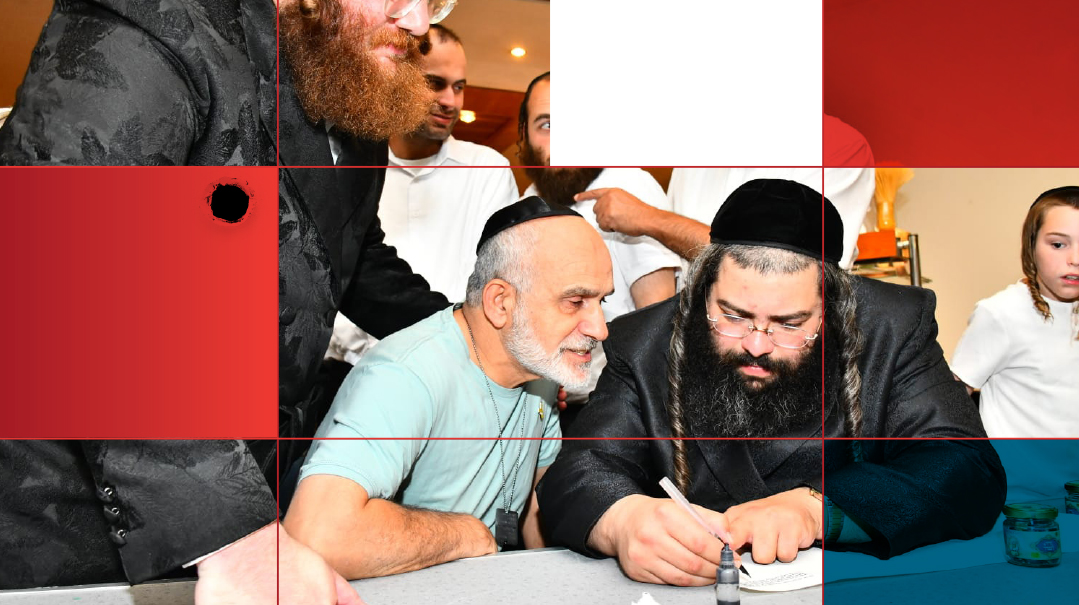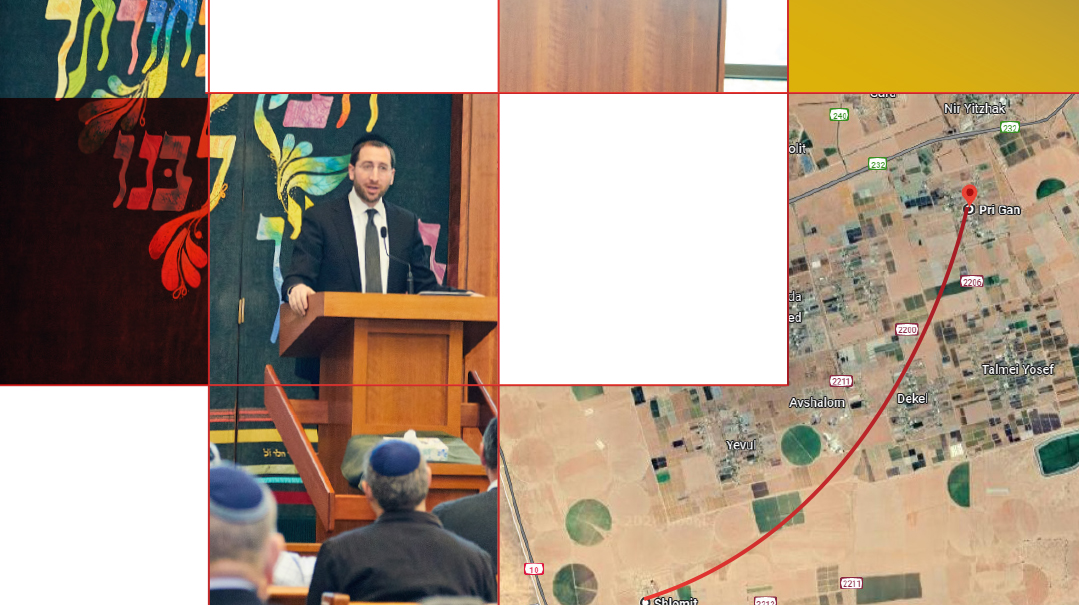Borderline Change

One year later, converging circles of heart and hope
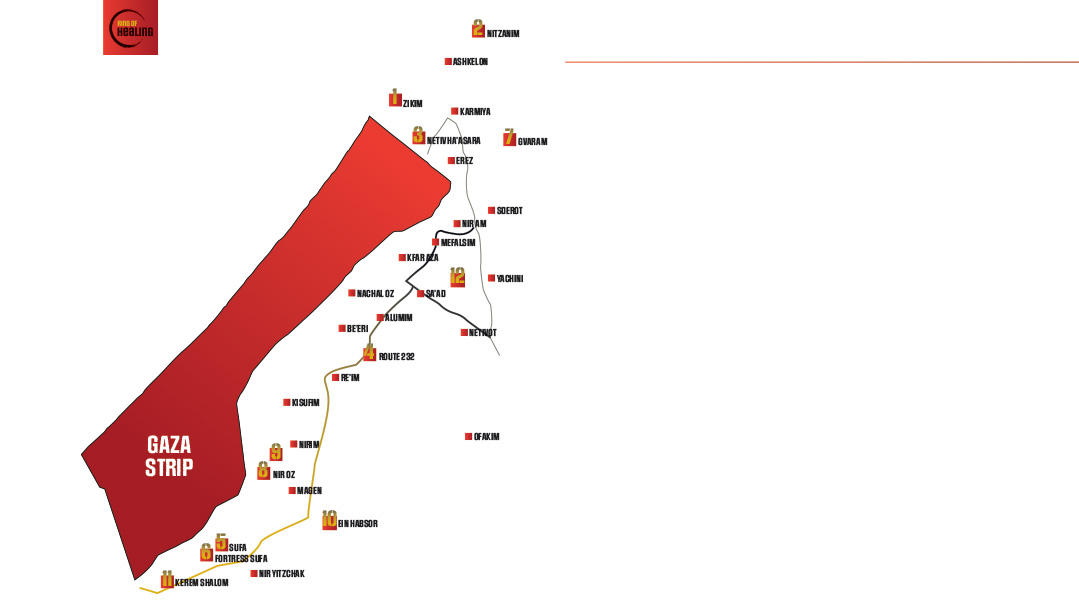
Photos: Aviad Partush, Yitzchak Yirmiyahu, AP Images
A year after the day of infamy that capped months of zero-sum struggle over Israel’s soul, a road trip through the devastated kibbutzim of the Gaza border reveals that there’s a unique, epochal moment for a fresh start — a new dialogue about faith and fate, what it means to be an Israeli and a Jew.
T
he hum of drones and drumbeat of gunfire is the only music you’ll hear around the Gaza border nowadays — but dissonance there’s aplenty. A year after the attack that shook the world, jarring discordance is everywhere. It’s in the sounds of birds twittering over depopulated kibbutzim. It’s in the verdant foliage next to the blackened homes. It’s there in the tractor tilling the rich soil where the killers sowed death.
If there’s anywhere in the Gaza borderlands that dissonance reigns, though, it’s on Route 232, along which lie the graveyards that are Kibbutz Be’eri and Re’im. Ignore for a minute the hostage release placards that grow thickly by the wayside, and the road could be any main artery in rural Israel — complete with too few lanes and farm vehicles manned by Thai workers. But drive along the highway, and it’s all too easy to imagine the terrorists who spilled exultantly onto this axis that parallels the Gaza border.
That dissonance hits me one morning at the beginning of Elul, driving along the 232 on a mission to answer a question that has burned inside me since the Hamas attacks a year ago.
My copilot on this quest is Rabbi Shlomo Raanan, founder of the Ayelet Hashachar outreach organization and the man whose pioneering work building shuls in the kibbutzim across the country has made him familiar with nearly all the communities that dot the region. Over 25 years of painstaking effort to bring Jewish life to the many left-wing communities on the country’s borders, he’s developed a rare perspective on the hard, secular core of Israeli society.
In the apocalyptic aftermath of Simchas Torah, while secular soldiers donned tzitzis, hilltop youth hugged Tel Aviv techies, and chareidim fed the IDF massing on the Gaza border, anything seemed possible. So a few weeks after October 7, I picked up the phone to Rabbi Raanan with a question. “Are we on the cusp of a great change in Israeli society, a historic convergence of left and right, secular and religious, a new dawn for Jewish identity — possibly even a revivalist wave of teshuvah?”
His answer was prescient, recognizing the scale of what had happened, but cautioning against reading anything into the atmosphere of unity. “We’ve just undergone an earthquake,” he replied, “and it’s too early to see where the pieces will settle.”
Over the course of the ensuing year, Rabbi Raanan and I maintained an intermittent discussion — part hashkafah, part realism, part hope — about what was unfolding. It was a year in which the fleeting unity gave way once more to the old left-right and secular-religious rancor, where the fate of the hostages became politicized, and where chareidim once more became the lepers of Israeli society. By the year’s end, the impression from the media is that the seismic shocks of October 7 have left nothing but the same zero-sum struggle over Israel’s soul. But is that true?
Almost a year on, we’re heading to October 7’s Ground Zero to understand not only what went on that day, but to answer the same question that we’ve wrestled with for the past 12 months. Over the course of 12 stops and 20 hours of interviews, we talk with people from the left and the right, with foresters and politicians, farmers and engineers, people lining up for pizza, and others talking in their workshops late at night. To each and every one we ask the same identical question — one whose answer will mark the Jewish future.
“Did Israel’s day of infamy really change nothing at all?”
Amid the devastated kibbutzim, in conversation with the residents trickling back after a year’s exile, we hear strange stories of deliverance that some acknowledge as miracles and others insist on calling blind chance. We meet some people clinging to old stereotypes, and others whose deeply held beliefs have been shaken to the core. Alongside those firmly in denial, we find many people prepared to think afresh about Jewish identity.
Down by Route 232, under the sunshine interrupted by palls of smoke and velvety skies lit by occasional flashes, post-October 7 Israel comes into focus.
Step away from the headlines that proclaim that nothing has changed; talk to the people and it’s clear that change is indeed afoot.
1: Kibbutz Zikim — Over the Beach
“This tiny shul saved us ”
The young socialist pioneers who founded Kibbutz Zikim south of Ashkelon in 1949 obviously had an eye for prime real estate. It’s an idyll. Azure waves and sandy beaches within hailing distance of the kibbutz houses — here at least, Karl Marx’s Workers Paradise lived up to its name.
Until last Simchas Torah, that is. On that fateful morning, Israel’s southernmost beach became the scene of a full-blown invasion. Security camera footage shows motorized dinghies speeding across the horizon, from Gaza to Israel. They’re packed with heavily armed Hamas frogmen, who’d trained for years for just this mission: to assault over the beach, destroy the army base adjacent, and then invade the kibbutz just a few hundred meters inland.
Israeli gunboats engage some of the force, firing at the dinghies and circling around individual frogmen in the water, as sailors lob grenades and fire heavy machine guns. But some of the terrorists — known in Arabic as “Nukhba,” or “elite” — evade the navy and make it ashore. They massacre 19 people camped out overnight on the beach, and then make their way to the army base.
That’s where the struggle for Kibbutz Zikim begins. From their homes a few hundred meters away, the kibbutznikim see everything. Nine terrorists get to the kibbutz fence, where four are killed by the defense squad, and five flee.
Beyond those bare statistics lies a story of survival — and as some locals see it, a miracle connected to a shul.
Yaacov Ohayon, a stocky man in his 50s, is a former policeman, current lawyer, and resident of Zikim’s “extension” — a modern area of spacious villas that lies between the original austere kibbutz and the sea.
A member of the kibbutz’s local defense squad, he was woken by the sirens and the volleys of missiles screaming overhead, and scrambled on his weapons and rushed to join the defense team.
A few minutes later, they were alerted that a Hamas force was at the kibbutz perimeter, directly behind Yaacov’s house. “We took positions behind these concrete blocks and saw a pickup truck full of Hamas fighters on the patrol road on the other side of the perimeter fence,” he recalls. “We opened fire straight away, emptying clip after clip.”
The terrorists came heavily armed; equipped with machine guns, rocket propelled grenades and even drones. It was clear, at least in retrospect, that they knew their way around the place. “Just two weeks before the attack, I saw one of the Arabs who was employed in construction here photographing my house with his phone. I thought he was taking a selfie, but now I know — it was all part of a mapping operation.”
It’s something that you hear everywhere in the region; residents remembering their own examples of the widespread intelligence gathering that was clearly part of Hamas’s master plan.
In one of the million acts of Providence that were everywhere on that grim day, Zikim’s local defense squad received unexpected backup in the shape of a squad of IDF Maglan special forces troops. Why were they there? A local resident who’s an officer in Maglan had punished five of his subordinates for driving in an army jeep without seat belts. Their punishment: detention on the adjacent army base for the Simchas Torah weekend.
Bolstered by the extra firepower, the defenders of Zikim managed to drive off the attackers who retreated to the nearby road commanding the approach to the army base. The terrorists were taking up positions when the Maglan squad infiltrated behind some sand dunes and killed them.
Best Defense
That storyline was widely reported in the media as the Battle for Zikim. But standing on the patrol road between his house and where the Hamas killers tried to enter, Yaacov Ohayon points out something that others have missed.
“The Nukhbas were outside the fence for a few minutes before we arrived,” he says. “It would have taken just a pair of wire cutters or a small explosive device like they used everywhere else to break in here, and then the results would have been the dreadful slaughter that we saw elsewhere. What were they waiting for — why didn’t they enter?”
For answer, Yaacov shows us to the parking space in front of his house, a few meters away from the spot where the terrorists tried to enter. Parked there is a little caravan containing what has to be one of the world’s smallest shuls.
It’s Yaacov’s pride and joy. As well as serving on the defense squad, he’s the gabbai of this midget shul. “Look inside here,” the gabbai says, turning on the air-conditioning. “We have everything here — an Aron Hakodesh, bimah, seats, siddurim.” It’s indeed a miniature wonder: five dinky mahogany pews with upholstered seats, a little wall-mounted Aron Hakodesh, and a movable amud.
The story of this place is the tale of the baby steps that some in the region are taking towards Jewish observance. With a Sephardic background, Yaacov is one of a cohort of more tradition-minded people who’ve moved to the old secular kibbutzim of the region.
Yaacov connected with Rabbi Raanan a number of years ago, when the latter held a hachnassas sefer Torah in a neighboring kibbutz. That meeting led the shul builder to set the ball rolling on a shul in Zikim.
When Ohayon applied to the kibbutz leadership for a permit, they refused. That wasn’t, perhaps, surprising: like many kibbutzim in the area, Zikim was founded after the War of Independence drew Israel’s then-Gaza border with Egypt. Of the various sub-ideologies encompassed by the kibbutz movement, the Hashomer Hatzair (“Young Guard”) movement that founded Zikim was the furthest left, a byword for secularism.
The no from the kibbutz leadership led Rabbi Raanan and Yaacov to pursue an unusual option: a shul small enough to fit into a parking space that would require no permit whatsoever.
Parked in front of Yaacov’s villa on the very edge of the kibbutz, it acts as the first beachhead of Torah life in this very secular place. Last Simchas Torah morning, it played a part in a very different type of beachhead, when Hamas attacked.
That’s why Yaacov Ohayon points Heavenward as he speaks about the rescue of Kibbutz Zikim. “I only have one explanation. Look where this happened: next to the shul. We were saved because of this shul.”
Oops! We could not locate your form.

